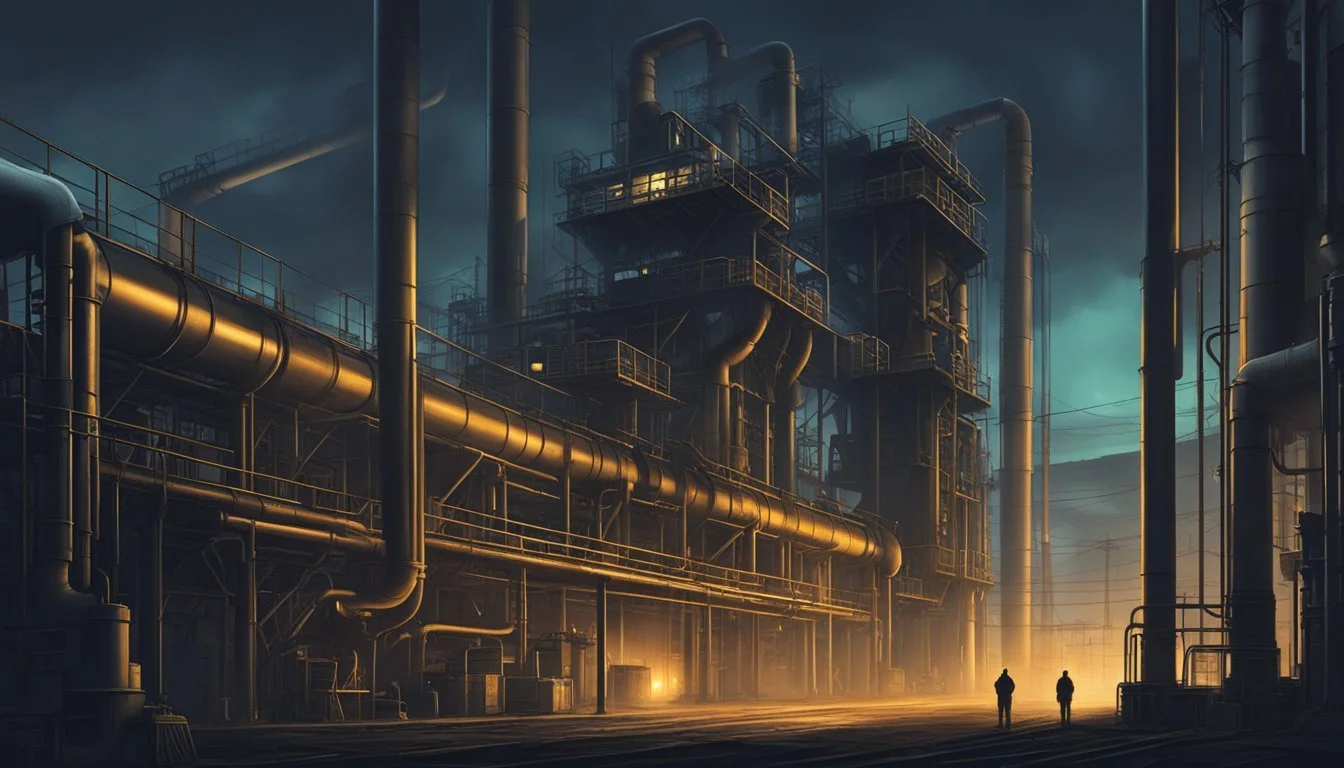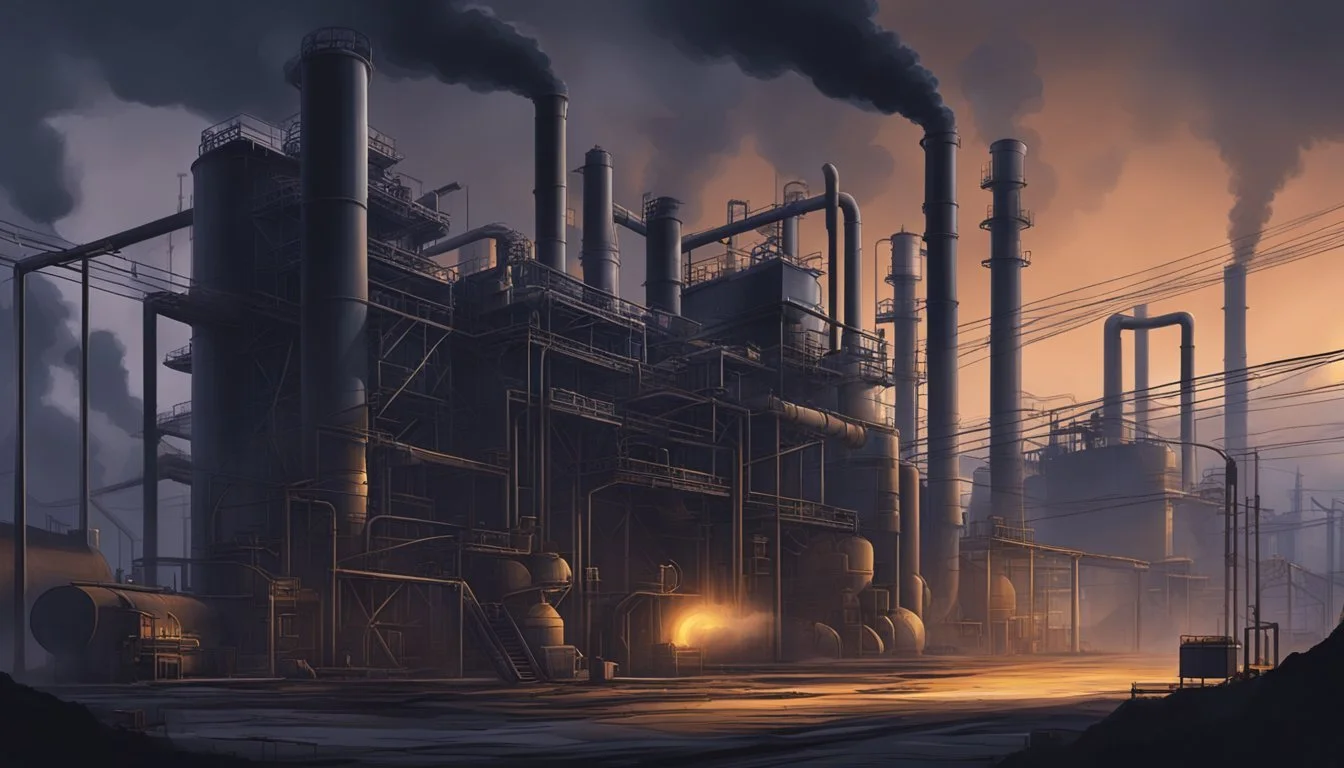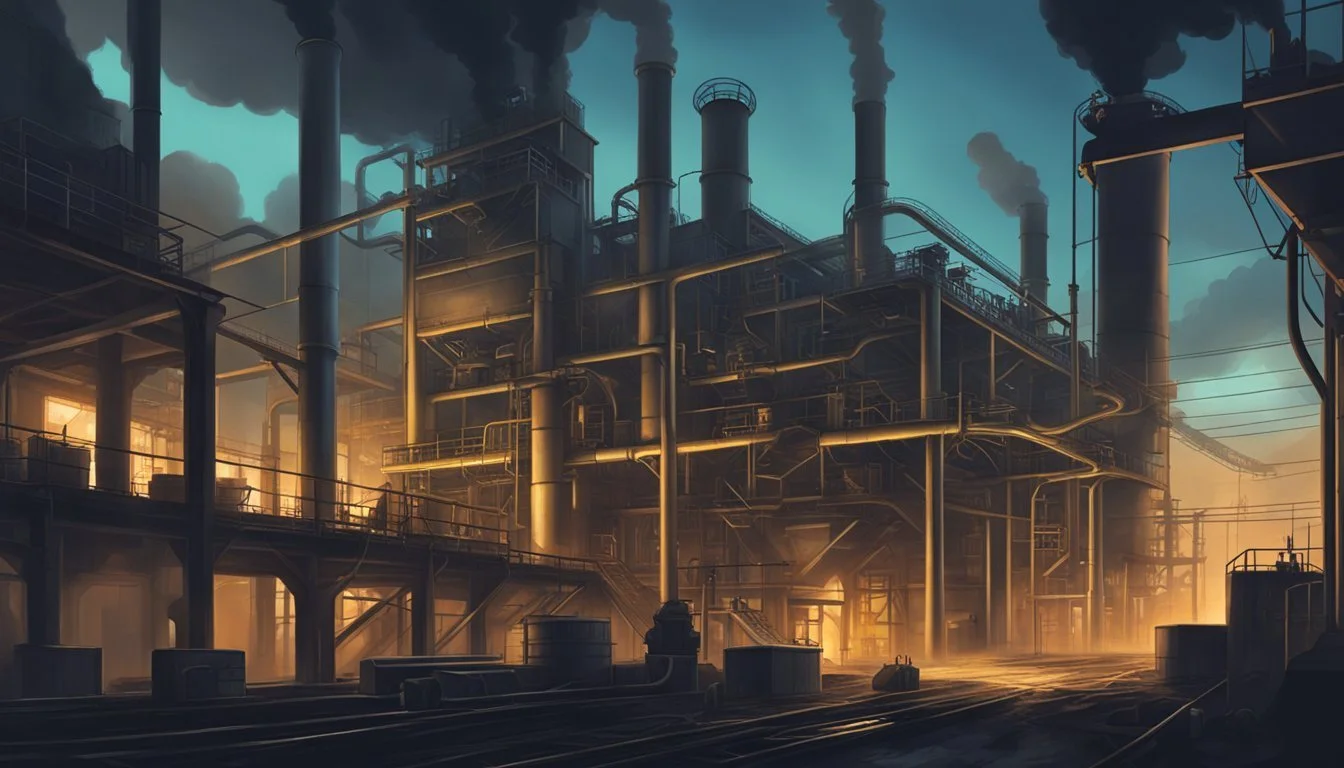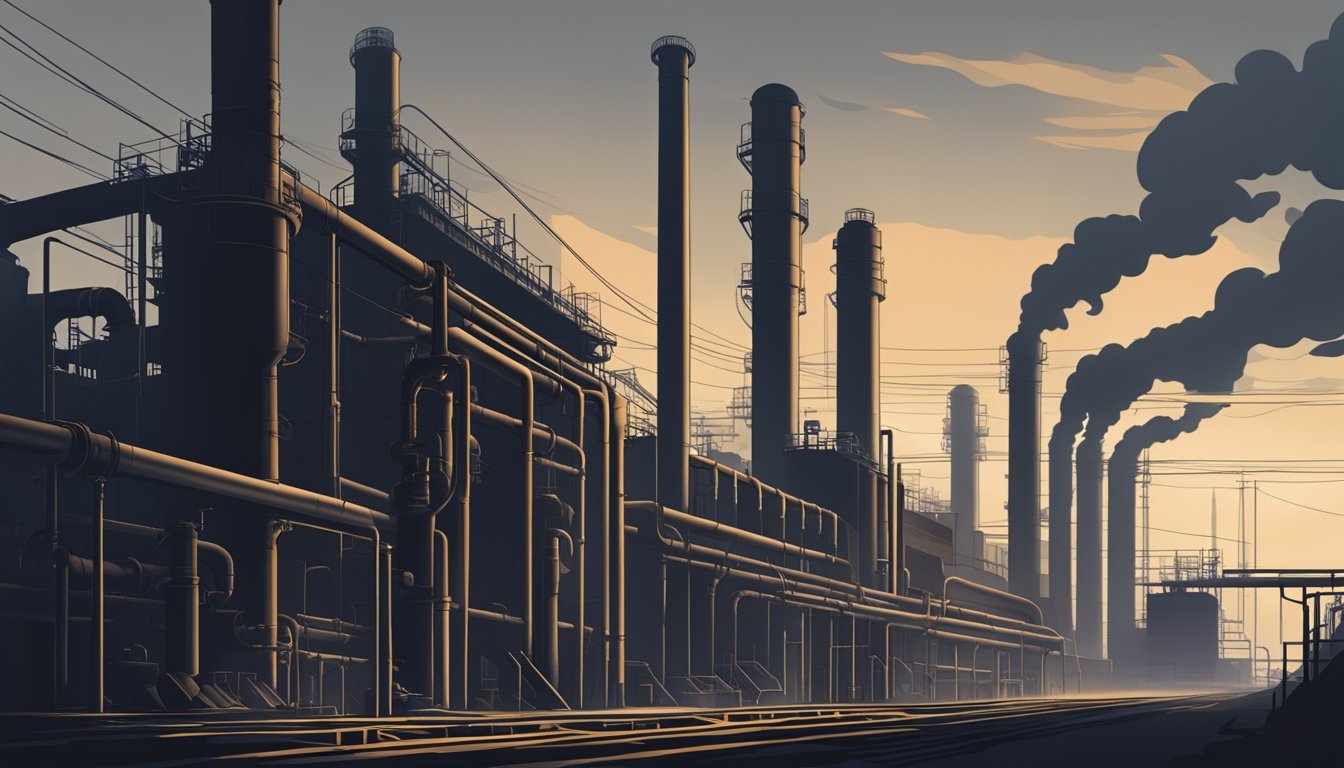Pipes and Screams: The Industrial Horror of Darnell Hartsfeld
A Dark Journey Through Factory Nightmares
The industrial horror of Darnell Hartsfeld unfolded in the shadows of Tyler Pipe, a manufacturing facility in Texas. Hartsfeld's name became inextricably linked to a series of brutal murders that shocked the local community and raised troubling questions about workplace safety and corporate responsibility.
In 1983, five people were abducted from a Kentucky Fried Chicken restaurant in Kilgore, Texas, marking the beginning of a case that would take decades to resolve. Darnell Hartsfeld and his cousin Romeo Pinkerton were eventually charged with the crime, known as the KFC murders. The investigation and subsequent legal proceedings exposed a web of violence that extended beyond this single incident.
While the KFC murders garnered significant attention, Hartsfeld's connection to Tyler Pipe added another layer of complexity to his story. The industrial setting became a backdrop for exploring themes of worker exploitation, dangerous working conditions, and the long-term health consequences faced by employees in such environments. This confluence of criminal acts and industrial hazards paints a chilling portrait of a community grappling with both immediate and systemic threats to safety and well-being.
Overview of Darnell Hartsfeld's Industrial Horror Legacy
Darnell Hartsfeld's impact on industrial horror stems from his real-life crimes in East Texas during the 1980s. His actions at industrial sites sparked fear and led to increased security measures in workplaces.
Impact on Genre and Cultural Perception
Hartsfeld's crimes influenced the industrial horror genre significantly. His targeting of workplaces like the Kentucky Fried Chicken restaurant in Kilgore, Texas, brought attention to vulnerabilities in seemingly safe environments.
The brutal nature of his attacks shocked the local community and captured national attention. This resulted in a heightened awareness of potential dangers in everyday work settings.
Hartsfeld's case inspired writers and filmmakers to explore themes of workplace violence and industrial settings as backdrops for horror narratives. His actions contributed to a shift in public perception of safety in industrial and commercial spaces.
Themes and Motifs in Hartsfeld's Works
While Hartsfeld himself did not create artistic works, his crimes introduced recurring themes in industrial horror:
Vulnerability of workers in isolated settings
Exploitation of lax security measures
Psychological impact of workplace violence
These elements became staples in fictional portrayals of industrial horror. Authors and filmmakers often draw inspiration from real-life cases like Hartsfeld's to create tension and fear in their narratives.
The long-unsolved nature of some of Hartsfeld's crimes added an element of mystery that resonates in many industrial horror stories. This aspect of his legacy continues to influence the genre, emphasizing the lingering effects of unsolved violent incidents on communities.
Historical Context and Inspirations
Darnell Hartsfeld's industrial horror draws from real-world industrial landscapes and his personal experiences growing up in Texas. These elements combine to create a unique vision of mechanical terror.
Real-World Industrial Influences
Hartsfeld's work reflects the stark reality of industrial zones in Texas. Oil refineries, with their towering smoke stacks and maze-like pipelines, serve as key visual inspirations. The constant hum and clang of machinery permeates his stories, creating an unsettling atmosphere.
Chemical plants and steel mills also feature prominently. Their imposing structures and potential for catastrophic accidents fuel Hartsfeld's narratives of technological dread. He often incorporates real industrial disasters into his fiction, blending fact and fantasy.
The desolate expanses of West Texas oil fields inform Hartsfeld's isolated settings. Abandoned pump jacks and rusted equipment become ominous figures in his tales, hinting at hidden dangers lurking in seemingly empty landscapes.
Hartsfeld's Personal History
Growing up in a small Texas refinery town deeply influenced Hartsfeld's perspective. His father worked as a plant operator, exposing young Darnell to the daily risks and hardships of industrial life. This firsthand experience lends authenticity to his portrayals of working-class characters.
Hartsfeld's teenage years coincided with several high-profile industrial accidents in Texas. These events left a lasting impression, fueling his fascination with the potential horrors lurking within familiar industrial sites.
His brief stint as a safety inspector at a chemical plant provided crucial technical knowledge. This expertise allows Hartsfeld to craft detailed, believable scenarios of industrial malfunction and terror.
Critical Analysis of 'Pipes and Screams'
Darnell Hartsfeld's 'Pipes and Screams' presents a chilling exploration of industrial horror, weaving together narrative complexity and character depth. The work stands out for its atmospheric tension and psychological undertones.
Narrative and Structural Examination
'Pipes and Screams' employs a non-linear narrative structure, jumping between past and present to heighten suspense. Hartsfeld uses the industrial setting of a derelict factory as both backdrop and character, with rusted pipes and echoing machinery creating a haunting atmosphere.
The story unfolds through multiple perspectives, primarily those of Mary Tyler and Joey Johnson. This technique allows for a nuanced portrayal of events and deepens the mystery surrounding the factory's dark history.
Hartsfeld's prose is taut and evocative, with vivid descriptions that engage all senses. The author skillfully builds tension through subtle foreshadowing and carefully placed reveals.
Character Development and Dynamics
Mary Tyler emerges as a complex protagonist, her initial skepticism gradually eroding as she uncovers the factory's secrets. Her professional demeanor as an investigator clashes with her growing unease, creating internal conflict that drives the narrative forward.
Joey Johnson serves as a foil to Mary, his local knowledge and superstitions contrasting with her logical approach. Their dynamic evolves from antagonistic to cooperative as they face shared dangers.
David Maxwell, the enigmatic factory owner, is portrayed through others' recollections and sparse appearances. His character remains largely shrouded in mystery, adding to the overall sense of unease and distrust permeating the story.
Hartsfeld excels in revealing character depths through their reactions to increasingly disturbing events, showcasing their vulnerabilities and strengths.
The Social Commentary of 'Pipes and Screams'
Darnell Hartsfeld's "Pipes and Screams" uses industrial horror to critique societal issues. The story explores the human cost of unchecked capitalism and the growing divide between social classes.
Industrialization and Dehumanization
In "Pipes and Screams," Hartsfeld portrays factory workers as cogs in a machine. The deafening noise of machinery drowns out their voices, symbolizing their loss of identity.
The character of Kilgore, a ruthless factory owner, embodies the callousness of industrial tycoons. He views his employees as disposable resources rather than individuals.
Hartsfeld's vivid descriptions of workers' injuries serve as a stark reminder of the physical toll of industrial labor. The story draws parallels between the grinding of machinery and the grinding down of human bodies and spirits.
Socioeconomic Disparities
The narrative highlights the stark contrast between the living conditions of workers and management. Factory employees reside in cramped, squalid housing while Kilgore enjoys a luxurious mansion.
Hartsfeld uses the factory's oppressive atmosphere to represent the suffocating nature of poverty. Workers are trapped in a cycle of low wages and dangerous working conditions, unable to escape their circumstances.
The story critiques the power imbalance between labor and capital. Workers' attempts to organize for better conditions are met with brutal retaliation, reflecting real-world struggles for labor rights.
Key Figures in Hartsfeld's Narratives
Darnell Hartsfeld's case involved several important individuals who played crucial roles in the events surrounding the Tyler Pipe murders. These key figures shaped the narrative and influenced the course of the investigation and subsequent legal proceedings.
Protagonists and Antagonists
Darnell Hartsfeld emerged as the central antagonist in the Tyler Pipe murders case. His actions and decisions led to the tragic events that unfolded. Law enforcement officials, including detectives and prosecutors, took on the role of protagonists in their pursuit of justice.
The victims of the murders became unwitting protagonists in this grim tale. Their lives and stories were tragically cut short, leaving a lasting impact on the community. Family members of the victims also became important figures, advocating for justice and keeping the memory of their loved ones alive.
Supporting Characters
Romeo Pinkerton played a significant supporting role in the Hartsfeld case. He was indicted alongside Hartsfeld on capital murder charges related to the Tyler Pipe murders. Pinkerton's involvement added complexity to the investigation and legal proceedings.
Opie Ann Hughes emerged as another notable supporting character. While specific details about her role are limited in the provided information, her name is associated with the case. Supporting characters like Hughes often provide valuable context or testimony in such cases.
Legal representatives, including defense attorneys and prosecutors, formed an essential part of the supporting cast. Their arguments and strategies shaped the courtroom narrative. Witnesses, both expert and eyewitness, also played crucial supporting roles in piecing together the events surrounding the murders.
Reception and Legacy
The Tyler Pipe murders case and Darnell Hartsfeld's involvement sparked intense public interest and debate. It left a lasting impact on true crime media and the local community.
Critical Acclaim and Criticism
Documentaries covering the Tyler Pipe murders received mixed reviews. Some critics praised the in-depth exploration of the case and its complexities. Others felt certain films sensationalized the tragic events. Law enforcement's handling of the investigation faced scrutiny. Some commended the persistence in solving the cold case. Critics pointed to potential missteps and delays in the initial investigation.
The convictions of Hartsfeld and Pinkerton remained controversial. Supporters viewed it as justice served after decades. Skeptics questioned the reliability of evidence presented at trial. The case highlighted challenges in prosecuting cold cases with limited physical evidence.
Influence on Future Works
The Tyler Pipe murders inspired several true crime books and podcasts. Authors and creators cited the case's twists and turns as compelling narrative material. It became a cautionary tale about the importance of preserving crime scene evidence.
The case influenced investigative techniques for similar crimes. Law enforcement agencies studied it to improve cold case protocols. Advances in DNA technology played a crucial role in eventually solving the murders. This aspect of the case is often highlighted in forensic science courses.
Media coverage of the slayings and subsequent trials raised awareness about victims' rights. It sparked discussions on supporting families of violent crime victims long-term.
Cinematic Adaptations and Visual Storytelling
Darnell Hartsfeld's industrial horror stories have inspired various film and television adaptations, each bringing unique visual interpretations to his unsettling narratives. These adaptations employ distinctive visual styles and techniques to capture the eerie atmosphere of Hartsfeld's fictional worlds.
Film and Television Interpretations
Several of Hartsfeld's works have been adapted for the screen, with varying degrees of success. The 2018 film "Pipes and Screams" received critical acclaim for its faithful adaptation of Hartsfeld's novella. Director Sarah Chen skillfully translated the claustrophobic factory setting to film, emphasizing the oppressive industrial atmosphere.
Television adaptations include the 2020 miniseries "The Graveyard Shift," based on Hartsfeld's short story collection. The series utilized an anthology format, dedicating each episode to a different tale. This approach allowed for diverse visual interpretations of Hartsfeld's work, showcasing different directors' visions.
Interestingly, a Kentucky Fried Chicken commercial in 2022 drew inspiration from Hartsfeld's imagery, featuring a surreal fast-food kitchen with ominous machinery. This unexpected homage demonstrated the reach of Hartsfeld's visual aesthetic beyond traditional horror media.
Visual Styles and Techniques
Adaptations of Hartsfeld's work often employ specific visual techniques to convey the sense of industrial dread. Desaturated color palettes are common, emphasizing the bleak, oppressive environments central to his stories. Directors frequently use wide-angle lenses to distort factory interiors, creating a sense of unease.
Sound design plays a crucial role in these adaptations. The rhythmic clanging of machinery, hissing of steam, and distant screams are carefully layered to build tension. Some adaptations incorporate industrial music to further enhance the atmosphere.
Practical effects are often favored over CGI to maintain the tangible, gritty feel of Hartsfeld's descriptions. Elaborate set designs featuring intricate pipework, rusted machinery, and cramped corridors help immerse viewers in these industrial nightmares.
Conclusion
The Tyler Pipe murders and Darnell Hartsfeld's involvement left an indelible mark on industrial safety practices. This case brought worker protection issues to the forefront of public consciousness.
Documentaries exploring the incident have shed light on corporate responsibility and the effectiveness of compensation trusts. The tragedy prompted reforms in workplace safety regulations across the manufacturing sector.
Hartsfeld's actions serve as a stark reminder of the potential consequences when safety protocols are neglected. The incident continues to influence modern industrial policies and employee training programs.
The Tyler Pipe case remains a pivotal moment in labor history. Its legacy lives on through improved safety standards and heightened awareness of worker rights in hazardous environments.









